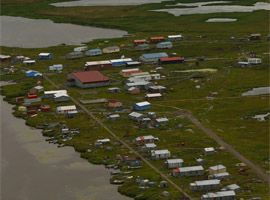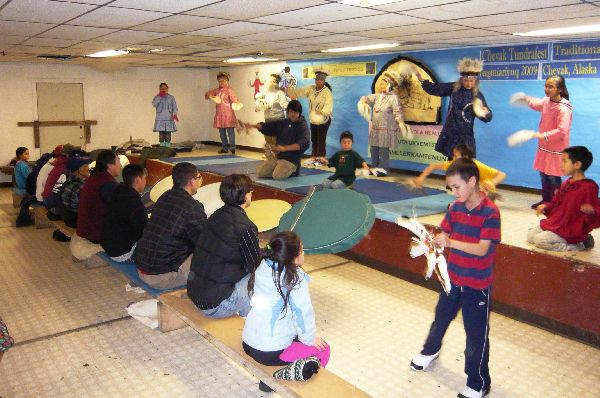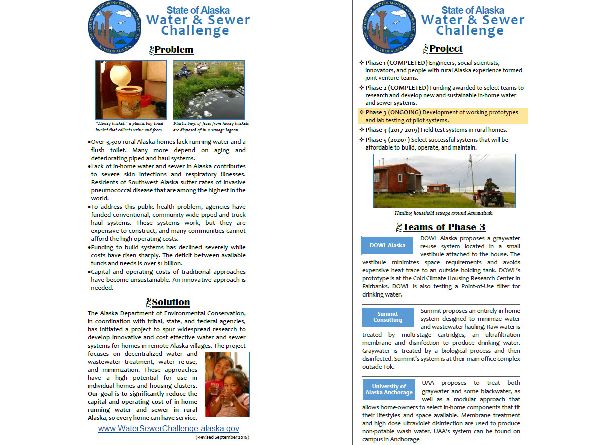Alaska Water and Sewer Challenge (AWSC)
About the Alaska Water and Sewer Challenge
To improve the health of rural Alaska residents, the Alaska Department of Environmental Conservation, in coordination with tribal, state and federal agencies, spearheaded a research and development effort to find better and more affordable ways to deliver drinking water and sewage disposal services to rural Alaska.
The Problem
- Over 3,300 rural Alaska homes lack running water and a flush toilet. Most of these homes are located in 32 “unserved” villages. In addition to that, many homes and villages with service depend on aging and deteriorating piped and haul systems.
- Lack of in-home water and sewer service in rural Alaska causes severe skin infections and respiratory illnesses. Residents of Southwest Alaska suffer rates of invasive pneumococcal disease (IPD) that are among the highest in the world.
- To correct this public health problem, agencies have funded conventional, community-wide piped and truck haul systems. However, although these systems work, they are expensive to construct and many communities cannot afford their high operational costs.
- Funding to build systems has declined severely while costs have risen sharply. The deficit between available funds and needs is over $1.8 billion.
- Many households in rural Alaska use a toilet known as a "honey bucket". A plastic bag lined bucket collects urine and feces. Then, plastic bags of feces from honey buckets are disposed in a sewage lagoon.
- A different approach to delivering these services is needed.
The Solution
With an international solicitation of proposals in 2013, the Alaska Department of Environmental Conservation has initiated a project to spur worldwide research and develop innovative and cost effective water and sewer systems for homes in remote Alaska villages. The project, called the Alaska Water and Sewer Challenge, focuses on decentralized water and wastewater treatment, onsite water reuse, and water minimization. These approaches have a high potential for use in individual homes and housing clusters. Our goal is to significantly reduce the capital and operating costs of running water and sewer in rural Alaska homes.
Phases 1 through 3 of the Alaska Water and Sewer Challenge were guided by Performance Targets and a Steering Committee formed with representatives of tribal, state, and federal agencies. After evaluating statement of qualifications from more than fifteen joint ventures formed with aspirations to compete in this Challenge, cross-checking hundreds of resumes and professional references (Phase 1), scoring more than ten technical proposals for onsite water reuse systems (Phase 2) and, evaluating the testing results of three prototype systems operating in different locations around the state (Phase 3), we are prepared to move a graywater reuse prototype into Phase 4: Field System Development & Testing. A team led by Professor Aaron Dotson from the University of Alaska Anchorage has designed an in-home water reuse system that can produce ‘wash water’ of safe quality for human skin contact. ‘Wash water’ refers to the type of water that is reused for cleaning (non-potable) purposes only, not for drinking or cooking. This practice is observed in some rural households trying to reduce the volume, frequency and cost of having to self-haul water into the home or paying for water delivery. The Challenge aims to build upon this water reuse practice by adding a water treatment step to safeguard human health. Graywater from showers, clothes washers, and bathroom sinks will be treated by a small in-home water recycling system and re-delivered via the same fixtures. In this way, the need to haul wastewater out of the home or pay for pick-up service is reduced. For more details on upcoming Phase 4 or previous phases, please see our page with information on Project Timeline.







 Indicates an external site.
Indicates an external site.